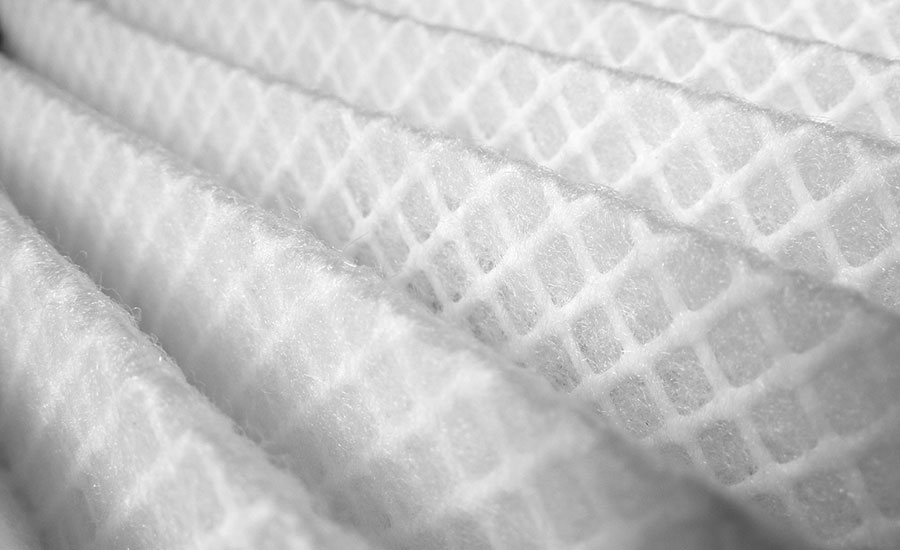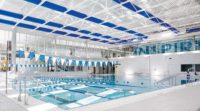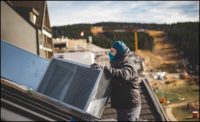Defending your selection of air filters in a lawsuit should be easy, right? But is it really? There are a lot of factors to consider when designing HVAC systems for occupied spaces, including the cleanliness of the outside air used for ventilation.
As with most HVAC system decisions, professional engineers face a challenging balancing act when considering comfort (ASHRAE 55), health (ASRHAE 62), and energy (ASRHAE 90). In addition, it is important that the building be provided with maintainable systems with accessibility for a facility maintenance staff to properly maintain the basic products, such as the outside air filters.
IAQ is not an isolated discussion and must be done in conjunction with a full understanding of building pressurization, stack effect, and atmospheric wind pressures on the building as well as the building envelope design and construction materials, which are all part of controlling and minimizing untreated air infiltration. In addition, the local air change effectiveness within a specific space is a part of the overall IAQ discussion to ensure the supply air is effectively delivered to the occupant breathing zone at all times.
Filtration for contaminant control gets quite basic and begins with the human nose. This personal individual air intake system teaches us a lot about contaminant control and even moisture control. As a person inhales air through their nose, the air passes through a filter of hairs that are slightly coated with mucus. This wetted filter system captures larger airborne particles and prevent them from entering the lungs or sinuses. Nose hairs also help to slow the air down to give a longer dwell time to warm to body temperature before entering the lungs so the air is not too cold causing condensation of water vapor in the lungs which can lead to pneumonia.
In addition, water vapor is also added to the air as it removes moisture from the mucus coating these hairs, since the body seeks to maintain a specific balance of water. If air that is too dry enters the lungs, it can result in evaporation of moisture that drops the balance below a level the body can tolerate. If the inner surfaces of the lungs become too dry, it can become difficult and painful to breathe. The body will then react by sending additional moisture to the area, which could lead to other problems including infection.
(In some situations, humans use a variety of personal inhalation devices to filter contaminants in work spaces. This is similar to personal demand control ventilation and may not be a bad idea for building owners to provide as part of an overall IAQ strategy if there are occupants with specific needs for special air quality conditions beyond what the HVAC system is providing.)
Outside air filtration has become more and more of a focus in recent years as professional engineers and facility owners take into consideration the first cost of filtering the outside air in the HVAC system along with the long-term cost of replacement filtration products and energy cost. In addition, not all outside air is the same at each building site, thereby requiring the engineer of record to research and document the level of filtration needed to comply with the codes and industry standards to ensure the filter selection is defendable.
Resources for Discussion
At the early stages of any building design, a discussion with the facility owner about filtration and ventilation rate discussions is wise. The facility owner must understand the importance of this decision and the required maintenance to ensure the building is operated to meet the design intent. A good starting point of discussion is found in some ASHRAE documents; however, there are many other resources that are used to develop the ASHRAE documents that may be worth reviewing in depth in a discussion also.
ASHRAE Handbook 2017 Fundamentals, chapter 11 on Air Contaminants, has good information about both particulate and gaseous air contaminants both from outside air and inside sources. The chapter gives good practical information that can be used by a professional engineer when evaluating filtration needs with the building owner for both new or retrofit buildings. Chapter 12 discusses odors.
ASHRAE Handbook 2017 Fundamentals, chapter 16 on Ventilation and Infiltration, discusses where the outside air contaminants enter a building. Infiltration control is important to control unfiltered air contaminants entering a building. Inside pollutant sources and control are generally a function of building use and may or may not be able to be changed based on the owner’s needs. This needs to be understood by the design team. Architects also can help or hurt the cause by product selections that may require a need for a greater level of filtration, which can add to not only the first cost of an HVAC system but also the lifecycle total cost that takes into account filter replacement and energy costs.
In addition, there is also discussion in chapter 16 regarding both the “nominal air change effectiveness” and the “local air change effectiveness” and assumptions that the use of a value of 1, which may or may not be true if proper air device selections are not made, thereby increasing the risk of making this assumption arbitrarily. The supply air diffuser is one of the most critical product selections in the entire HVAC system when ASHRAE 55, 62, and 90 are fully considered.
The use of the ASHRAE 62.1’s Ventilation Rate Procedure may provide a false sense of security for many professional engineers if a discussion and documentation of the outside and inside contamination sources is not done with the building owner and architect. It must be clear regarding the outside air quality that is used by ASHRAE 62 regarding determination of the minimum ventilation rates. The professional engineer should carefully read the appendix of ASHRAE 62 and see if all criteria is applicable to the specific building location, and then document this evaluation as part of the design criteria for the owner to be aware of.
It may be wise to discuss in detail the use of the IAQ procedure with the entire design team so that there is full understanding of the importance of decisions by architects, interior designers, and facility users regarding pollutants and their impact on the health of the building occupants.
The ASHRAE Handbook 2016 HVAC Systems and Equipment – Chapter 29 (Air Cleaners For Particulate Contaminants), has good information regarding air filtration products. In addition, chapter 17 of the same handbook discusses ultraviolet lamp systems that are used in some applications to disinfect surfaces and airstreams. The decision on filtration products for particulate and gaseous contaminants and disinfecting strategies becomes more logical after the purpose and need is clearly documented based on outside and inside levels of contaminants.
ASHRAE Standard 52.1 provides specifiable evaluation criteria of filters and ASHRAE Standard 52.2 provides the filter’s initial efficiency as a function of particle size, in addition to a numeric value that allows a user or engineer to specify a product minimum efficiency reporting value (MERV).
The International Standards Organization ISO — 16890 has information that also can be used in conjunction with ASHRAE 52 for specifying filter performance. The filtration products and holding frames required to be provided must be specified and the professional engineer-of-record is responsible and accountable and liable for this decision.
In addition to those noted above the Environmental Protection Agency (EPA) has resources online such as an interactive map of air quality monitors and criteria air pollutants required of EPA by the Clean Air Act for National Air Quality Standards.
Reduced Outside Air Options
The International Mechanical Code allows the reduction of outside ventilation air when the registered design professional demonstrates the filtration used will prevent the maximum concentration of contaminants from exceeding that obtainable by the rate of outdoor air ventilation determined in accordance with the prescriptive procedure in the code, depending on the filtration methods.
Reduced outside air can be a huge energy saver and lifecycle cost reduction for the facility owner, but it can also be a huge increase in liability for the engineer of record, especially if the owner is not willing to pay for such level of evaluation and accept part of the liability of such a decision on filtration selection and maintenance. The code is not totally clear on maximum concentrations of contaminants, thus the Authority Having Jurisdiction (AHJ) would need to be included in the process of accepting such a filter application strategy.
Product Selection Considerations
There are multiple types of filtration products available on the market for particulate, gaseous, and germicidal air cleaning. This article won’t go into all of those since it is quite extensive. Suffice it to say it is worth reviewing the products available on the market with the client early in the design phase of a building project.
A defendable filtration decision takes more engineering time and involves more risk for the engineer to research the benefit to the owner than many may acknowledge. This level of research is something to discuss with the owner at the beginning of a project prior to establishing the design fees. The filtration media is only one aspect of the overall filtration consideration. The filter housing is critical, too, when bypass rates of the filters are considered and can allow pollutants to be untreated as they enter the building just as if they were part of the infiltration air.
Selecting the proper filtration for both particulate and gaseous contaminants is more of a challenge than most building owners probably acknowledge when hiring professional engineers. There is a focus on the amount of outside air for proper ventilation; however, the amount of proper ventilation begins with determining if the outside air is even acceptable and designing a system for cleaning the air if it is not.
Ultimately, the question becomes: What are acceptable air quality and contaminant concentrations within the building? This is not an easy decision to make, even when all the information available is discussed. It may be that some professional engineers in today’s fast pace of design ignore the importance of total pollutant control within a building and put themselves at greater risk by not having an in-depth discussion with the architect and building owner regarding contaminant sources and control.
Since there is lack of health-based concentration level guidance due to a lack of health data, the determination of proper minimum ventilation rates and filtration required becomes difficult at best. This begs the question of how a professional engineer should document the decision of filtration selection to ensure the decision is defendable in court, in the event of a challenge from a building occupant who develops health issues while working within a specific building.
The question arises about whether the ASHRAE handbooks and standards, other industry standards, and even the codes really provide sufficient information for a defendable filtration decision to be made. If not, what level of building owner discussion should be held during the design process so that the facility owner understands their own liability and has options to modify the filtration systems if any issues should come up during the occupancy phase of a building’s life?
Conclusion
Regarding any engineering decision in today’s world that focuses on energy, health, and comfort, there should be time at the beginning of every building design to discuss all that is involved in the building sciences regarding the indoor environment.
A building owner at the start of a major project once defined the building’s architecture like so: It’s simply an enclosure of the utilities that make the occupants comfortable and able to be the best they can be while working in the space. This is a good point to ponder when air quality and filtration are considered by the facility owner, professional design team, construction team, commissioning team, and (most of all) the maintenance team. The risks and rewards of selecting something as seemingly simple as an air filter are certainly worth discussing in both new and retrofit projects.





